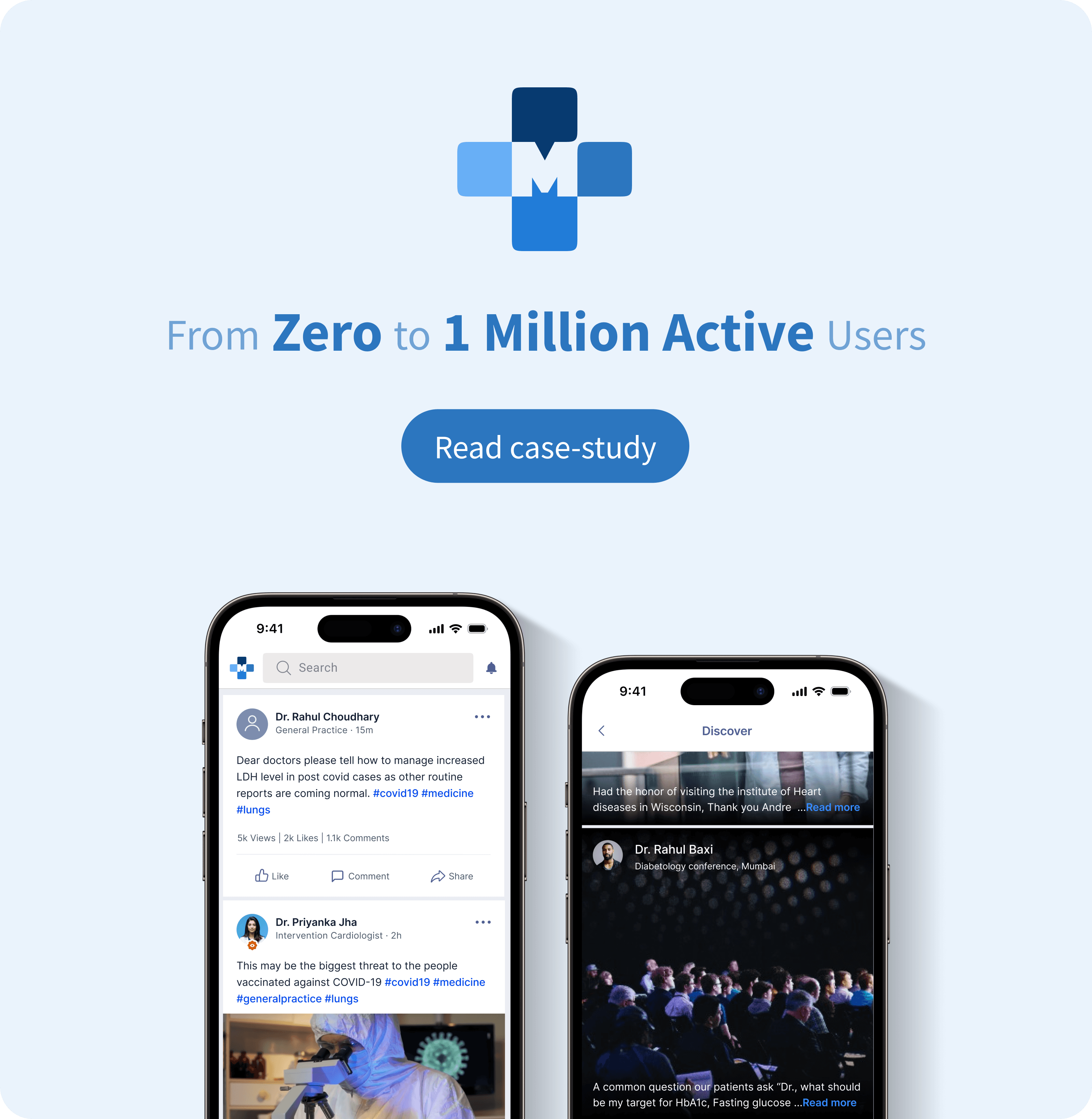Problem Statement
Objectives
Design Process
Survey & Insights
User Persona
How Might We?
Design Challenge
Design Reflections
Where everyday grocery choices turn into healthier habits effortlessly
Industry
Quick Commerce
Project goal
Demonstrate advanced UX capabilities, business awareness, and AI-aligned product re-design for a growing quick commerce platform.
Project Duration
Apr, 2025
Focus areas
UX Design, Product Thinking, AI Integration, Health-Tech, Grocery Commerce
In a nutshell
Many users shopping for groceries/snacks online report feeling guilt when frequently or habitually purchasing unhealthy items, often struggling with this emotion both during and after shopping sessions. This sense of guilt is not just about the food itself, but also about broader aspirations around health and self-worth, leading to ongoing cycles of self-blame when unhealthy foods repeatedly make their way into the cart.
Discussions and observations revealed that the guilt many users associate with regular unhealthy purchases signals a strong need for supportive, intelligent guidance in the grocery shopping journey. This insight informed the design of Nutri Assist: an AI-powered assistant integrated into the Blinkit grocery experience, aimed at gently guiding users towards healthier, more satisfying choices; and helping to replace guilt with empowerment at every step.
. . .
When healthy eating feels hard, even with instant grocery delivery
In urban India, users frequently use quick-commerce platforms like Blinkit for their daily needs. Data suggests users order more often on quick commerce apps than their local store. It is solely because these platforms prioritize…
Based on conversations with 22 Blinkit users, many were unaware of the hidden health impacts of commonly purchased foods. Here are a few quotes shared by a few on how they felt post their purchase.
. . .
Processed Staples and Sugary Essentials Drive Top Grocery Sales, Beyond Just Snacks
Broader research reveals that busy urban shoppers frequently choose convenience foods that may impact long-term health, highlighting a need to support better choices across the entire grocery basket.
Through quick user conversations and analysis of Blinkit purchase patterns, I discovered that busy urban users regularly buy not only snacks and sodas but also processed staples like instant noodles and white bread, items that contribute to poor diet quality. This insight expanded my initial focus beyond snacks to emphasize the importance of promoting healthier options throughout the whole grocery basket. While speed and convenience remain key priorities for users, there is a clear opportunity to encourage more nutritious choices without compromising convenience.
News story credit: NewsBytes
News story credit: Pixel7Studios
News story credit: Kearney
. . .
From insight to intervention: A practical design sprint for behavior-led nutrition
Mapping Insights to Ideas, and Ideas to Real-World Behavior
To create a solution that truly fits user needs, I followed a structured design process — starting with real user inputs and gradually building toward testable ideas.
What a 2-minute survey revealed about real users’ snacking struggles
To get a better and workable understanding of how users approach grocery shopping and health, I crafted a short Google Form survey, shared across social media and messaging platforms. Though the response count was modest, the data gave strong directional insights. It helped validate user habits, pain points, and their openness to healthier shopping nudges — and ultimately shaped the core product direction.
The survey questions were framed to validate these assumptions and uncover real user behaviours and desires. Post this, I worked with ChatGPT to compile the data into survey insights.
Ananya’s everyday grocery habits shaped everything we designed
To ground the experience in real user needs, I created a persona based on the survey data collected. Then I worked towards refining it after speaking to a user who closely fit the profile and volunteered from the survey for feedback.
How might we support healthier decisions without disrupting flow?
Translating user needs and insights to into early usable design ideas. Keeping this in my mind I began writing down "How might we" statements to begin setting a clear path towards an idea that is currently very broad.
Designing for urgency: Snack suggestions that feel timely, not intrusive
There was no central place for users to explore healthier product options unless through self-search…
Blinkit lacked a structured way to surface nutrient-first product suggestions — especially for macros like protein or low sugar.
Users had no clear entry point to interact with an AI assistant — no prompt, no nudge, no visibility.
Discovery was left to chance — even users actively seeking better choices had to scroll endlessly.
There was no visual feedback loop between what's in the cart and what could improve it nutritionally.
Cart insights felt isolated — they didn’t naturally tie into product discovery or selection.
I reimagined discovery around health goals by embedding contextual intelligence into the browsing experience — surfacing better choices without breaking user flow.
A Friendly Nudge Upfront
Smarter Discovery, Not Disruption
Suggestions That Stick
Flexible Formats for Varying Intent
Conversational Discovery, Tailored by Nutri Assist
. . .
Reflections as a Designer
. . .
Skills Applied & IxDF Certifications in Action 🎓
By applying these skills, I designed a proactive nutrition guidance tool that blends behavior-aware suggestions with practical UX strategy. This case study reflects my ability to use AI to simplify decision-making, reduce cognitive load, and build contextual experiences at scale.
Used AI-assisted UX tools to surface snack suggestions based on user goals like "low sugar" or "high protein," improving relevance without needing explicit filters.
Enabled predictive interaction patterns, where Nutri Assist anticipated user needs before input, using goal-aware prompt design.
Applied AI-generated tagging to create dynamic food labels (e.g., low fat, high fiber), aiding quick comprehension and faster decisions.
Created snack suggestions that were personalized, contextual, and low-effort — with meaningful labels that reduced user decision fatigue.
Showcased how generative AI can enhance product utility, even in constrained grocery decision windows.
________________________________________
Prioritized micro-moment UX, understanding that user attention is limited (e.g., while ordering quickly before checkout).
Designed for high urgency, low distraction flows, by keeping prompts minimal and feedback clear.
Brought accessibility and modularity into snack recommendations, so labels and prompts adapt as context evolves.
Improved snack discoverability during critical decision windows, increasing perceived helpfulness without slowing down the journey.
Enabled scalable nutrition education, surfacing value-added suggestions without cluttering the interface.
________________________________________
Considered perception and memory limits — ensuring snack choices and prompts were easy to process without overwhelming the user.
Made deliberate use of visual hierarchy and repetition to improve snack card comprehension.
Users could recognize and recall nutritional categories (e.g., “high protein”) even in fast-scrolling scenarios.
Helped convert abstract health goals into visible, tappable choices.
. . .
Disclaimer
. . .


















































